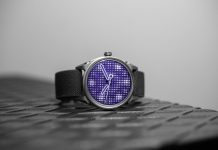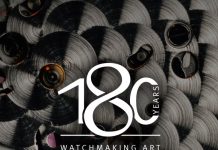
Panasonic today released the results of a research study conducted on its nanoe X technology, in partnership with global contract research organization, Texcell*1. As an organization that specializes in viral testings, viral clearance and immunoprofiling, Texcell has verified the inhibitory effect of the nanoe X, a technology with the benefits of hydroxyl radicals, on the novel coronavirus (SARS-CoV-2), through this collaborative study. Over 99.99% of novel coronavirus (SARS-CoV-2) activity in a controlled 45L test space was found to be inhibited by nanoe X within 2 hours.
Developed by Panasonic Corporation (“Panasonic”), nanoe X is the original ionizer that generates “nano-sized atomized water particles”. It is an electrostatic atomization technology that collects invisible moisture in the air and applies high voltage to it to produce hydroxyl radicals contained in water, which are strongly oxidative and highly reactive. Panasonic has been conducting research on this technology over the past 20 years since 1997, and has verified its effectiveness in a variety of areas, including inhibiting pathogenic microorganism (bacteria, fungi, and viruses) and allergens, breaking down PM 2.5 components that have adverse effects on the human body*2.

In 2012, Panasonic conducted a virus clearance test with a third-party organization and confirmed the effectiveness of each of the 4 categories in terms of biological characteristics. Based on this result, Panasonic announced that “hydroxyl radicals contained in water” technology could be expected to have an inhibitory effect on new viruses*3.
The novel coronavirus (SARS-CoV-2) of the current global pandemic is one such new type of virus, and testing with Texcell has now confirmed that the nanoe X does have an inhibitory effect on this virus. This testing was carried out in a closed laboratory environment, and was not designed to assess its efficacy in uncontrolled living spaces. Details of the test can be found in the Appendix. Panasonic will continue to pursue the potential of nanoe X technology to address possible risks associated with air pollution such as new pathogenic microorganisms, with the aim of creating healthy environments for people around the world.
APPENDIX
Testing of inhibitory effect of nanoe X on the novel coronavirus (SARS-CoV-2)
- Overview
A comparative verification was conducted in a 45L test space containing the novel coronavirus (SARS-CoV-2) with and without exposure to nanoe X. - Results
- Over 99.99% of novel coronavirus (SARS-CoV-2) activity was inhibited within 2 hours.
Note: This verification was designed to generate basic research data on the effects of nanoe X on the novel coronavirus in laboratory conditions different from those found in living spaces.
It was not designed to evaluate product performance.
- Methodology and data
Organisation :Texcell
Subject :Novel coronavirus (SARS-CoV-2)
Device :nanoe X device
Method: -
-
- nanoe X device is installed at 15cm from the floor in the 45L test space.
- A piece of gauze saturated SARS-CoV-2 virus solution was placed in a petri dish and exposed to nanoe X for a predetermined time.
- The virus infectious titer was measured and used to calculate the inhibition rate.
-
- Result Data

Notes:
*1: Texcell is a global contract research organization that specializes in viral testings, viral clearance, immunoprofiling and R&D
or GMP cell banking, for your R&D, GClP, GLP and GMP projects.
With more than 30 years of experience and roots within the Pasteur Institute in Paris, Texcell has a long recognized expertise in
viral testing with a broad range of protocols for the detection of adventitious agents.
Texcell is the first spin-off of the Pasteur institute of Paris created in 1997.
*2: Main releases on verification cases
– May 12, 2009:Positive effects of charged water particles on viruses, bacteria, and agricultural chemicals have been verified.
– October 20, 2009: The new influenza virus inhibition effect of charged water particles has been verified.
– February 20, 2012:Supression effect of charged water particles on pet-related allergens, bacteria, fungi, and viruses have been
verified.
– January 16, 2014:Nano-sized electrostatic atomized water particles effectively breaks down PM2.5 components and inhibits
growth of fungi attached to Yellow Sand.
*3: January 26, 2012: Virus suppression effect of charged water particles has been verified by the virus clearance test. Co-verified with Charles River Biopharmaceutical Services GmbH, a German testing organization.












